#phylum mollusca
Text
Psst. Hey. Y'all should totally vote for the Mollusc of the Year awards, which are currently open at the moment: the winning species will have its genome sequenced for free, which greatly helps out the scientists studying it. Here are this year's candidates:

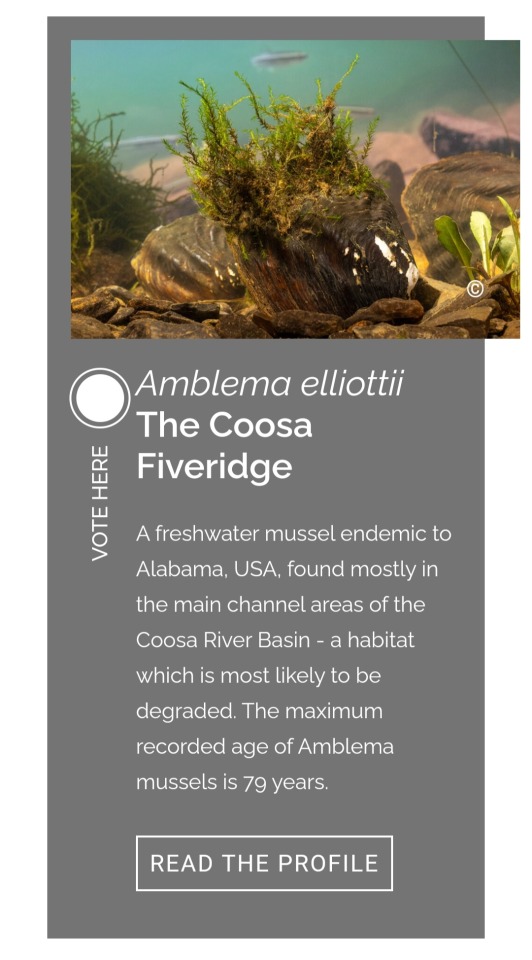
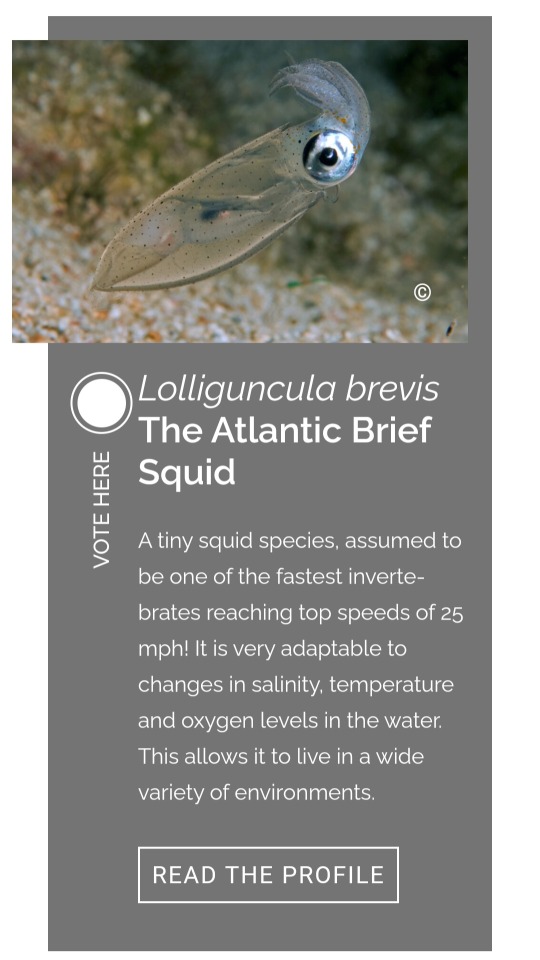
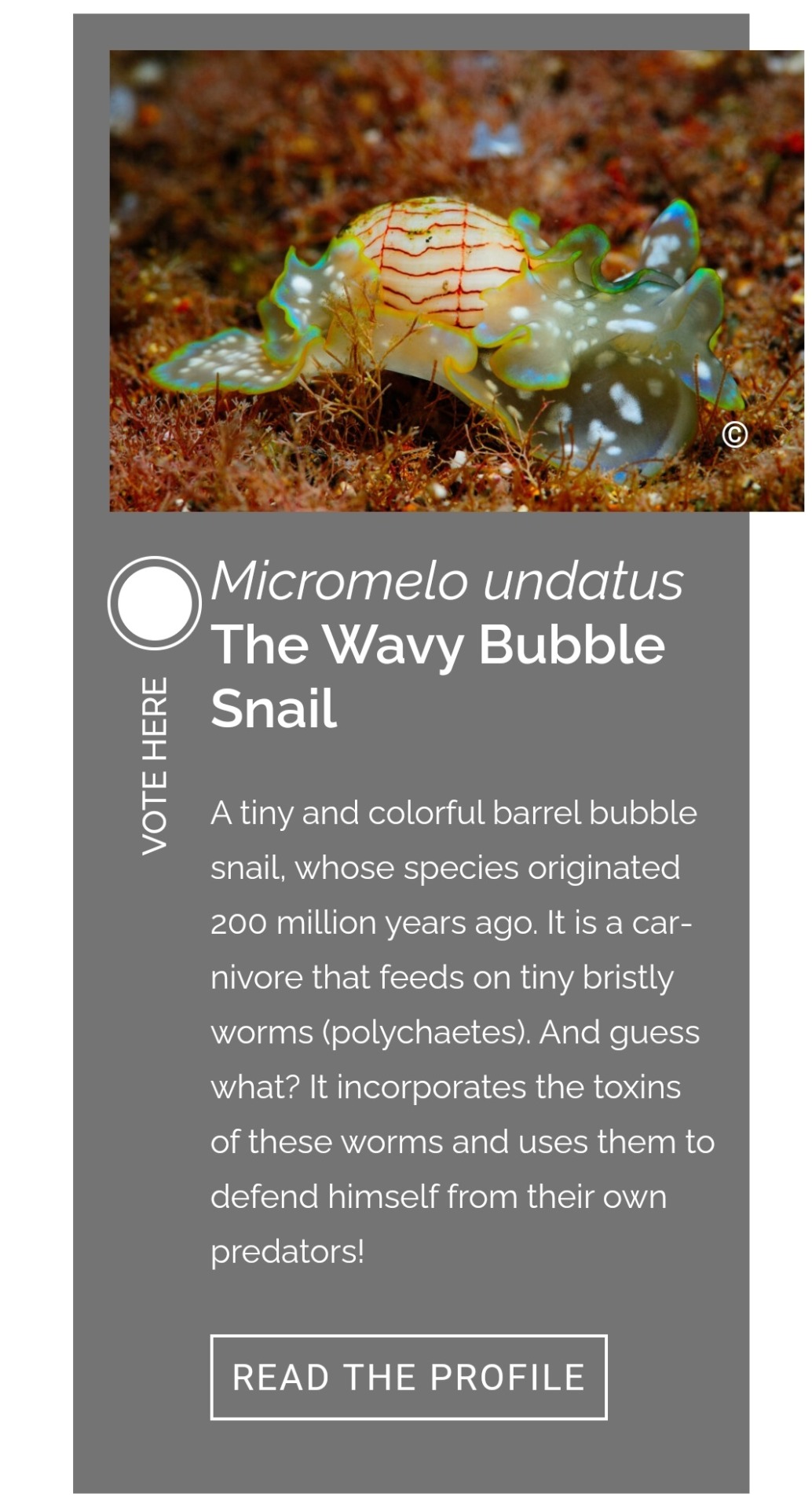

All of these guys are really cool, understudied invertevbrates, so spread the word! Its totally free, and you get to learn more about a bunch of cute underrated little guys
#molluscs#phylum mollusca#invertebrates#bugs#squid#snail#mussel#mollusc of the year#heard about it in invert bio class and had to share#i voted for the bioluminescent snail :)
757 notes
·
View notes
Text

I put them together so they can make friends
0 notes
Text
Phylum Round 1

Mollusca: Snails, slugs, cephalopods, bivalves, chitons, limpets, and others. This group contains the largest invertebrates, the giant and colossal squids. They are the largest marine phylum, but many members are terrestrial. Although they are incredibly diverse in body shape, all Molluscs generally have a hard "radula" used for eating, a mantle that may secrete a hard shell, and a body mostly composed of dense muscle. These animals can be predators, herbivores, filter feeders, symbiotic, and even parasitic. This phylum exhibits remarkable diversity overall.
Bryozoa: Moss Animals. Small, frequently colonial, and often colorful, Bryozoans are found in both freshwater and marine habitats. Their crown of tentacles are used for filter feeding, similar to Entoprocta. Colonies consist of zooids living within small cup-like supports that fuse together, forming encrusting or branching structures. Individuals may take on different shapes for different roles within the colony, such as the "avicularia", which are bird-beak-shaped zooids used for defense.
#mollusca#bryozoa#animal bracket#tumblr bracket#bracket tournament#poll bracket#phylum round 1#phylum
144 notes
·
View notes
Text

18 notes
·
View notes
Text
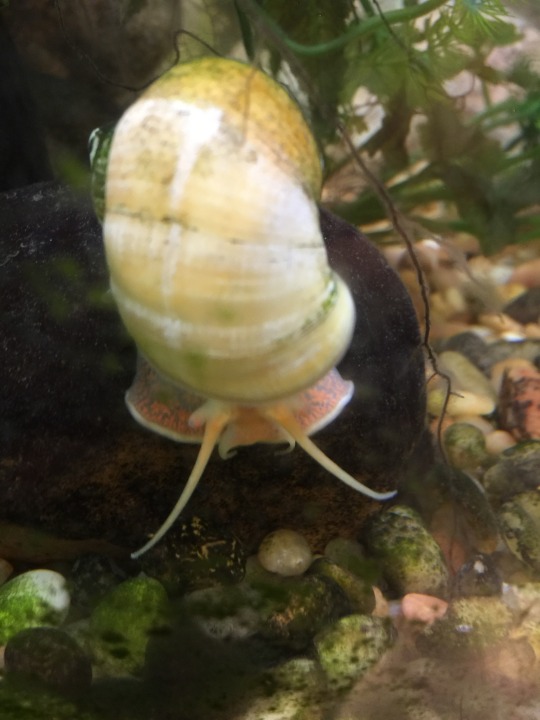
An unidentified species of freshwater snail!
1 note
·
View note
Note
it's a octopus :)
~ fish anon
That’s not a fish tho 😭😭😭😭
0 notes
Text
Round 1 - Phylum Mollusca
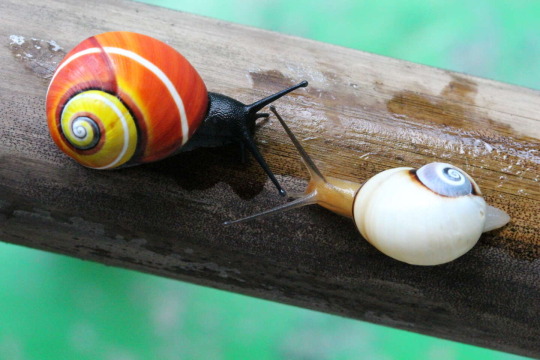

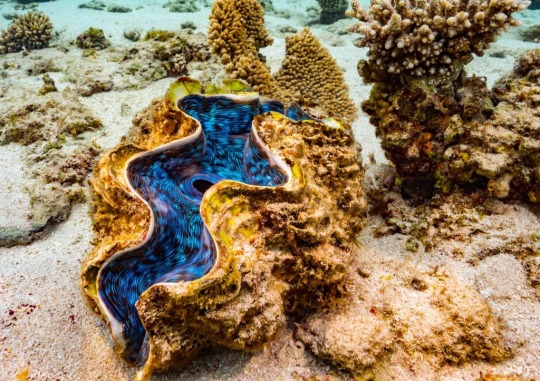
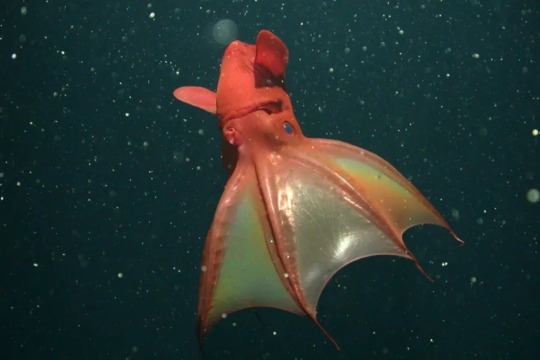
(Sources - 1, 2, 3, 4)
The second largest phylum, Mollusca contains over 76,000 living species and somewhere between 60,000 and 100,000 extinct species, including the ammonites and helcionelloids. Living groups include the chitons, solenogasters, caudofoveates, cephalopods (octopuses, squids, cuttlefish, nautiloids, etc.), scaphopods, gastropods (slugs and snails), and bivalves.
Molluscs are highly diverse, living on land, in freshwater, and in saltwater, where they comprise over 23% of all named marine organisms. The most diverse molluscs are the gastropods which comprise over 80% of known molluscs. Due to their high diversity, the only things most molluscs have in common are a soft body composed almost entirely of muscle, a mantle with a significant cavity used for breathing and excretion, the presence of a radula (bivalves excluded), and the structure of their nervous system.
Many molluscs are endangered due to collecting and killing individuals for their meat and/or decorative shells.

Propaganda under the cut:
Cephalopods are one of the (if not the) most neurologically advanced of all invertebrates and are capable of using tools, solving puzzles, and play.
Masters of camouflage, many cephalopods can change color, shape, and texture to hide from predators, sneak up on prey, and communicate with each other
The largest molluscs are the Giant Squid (Architeuthis dux), with 12–13 m (39–43 ft) long females and 10 m (33 ft) long males, and the Colossal Squid (Mesonychoteuthis hamiltoni) which is estimated between 10 m (33 ft) and 14 m (46 ft) long. The Giant Squid has much longer tentacles, but the Colossal Squid is heavier, reaching a mass of at least 495 kilograms (1,091 lb). The largest specimens of Colossal Squid, known only from beaks found in sperm whale stomachs, may perhaps weigh as much as 600–700 kg (1,300–1,500 lb).
Mollusc shells make up most of the “seashells” washed ashore, and are created by the animal via secretions of chitin and conchiolin from its mantle edge. Not all molluscs have shells (ex: nudibranchs) and for some, the shell is internal (ex: cuttlefish). Mollusc shells come in many beautiful colors, shapes, and sizes.
Most molluscs have eyes, and all have sensors to detect chemicals, vibrations, and touch. Of the phyla we have covered so far, their senses are the most developed.
Conchs can look at you like this:
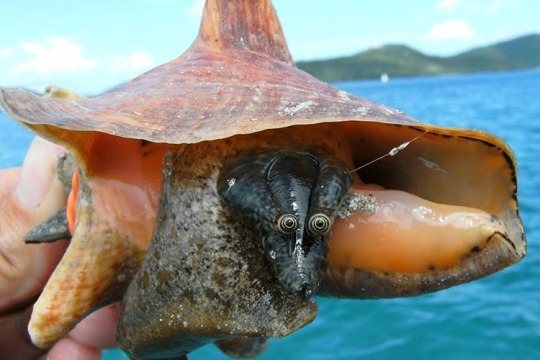
(Source)
All cone snails are venomous, and some of the larger species are some of the most venomous animals in the world. Even though some species’ stings are fatal to humans, their sophisticated venom has saved lives through its use in neurological research.
Humans don’t just use mollusk meat and shells, but also luxuries like pearls, mother of pearl, Tyrian purple dye, and sea silk. As stated above, many species are now endangered due to human use, but some are farmed for their meat, pearls, and shells. The farming of bivalves is more ecologically-friendly than the farming of chordates as, rather than create waste, bivalves like mussels and oysters actually clean the water.
As filter-feeders, bivalves are natural water filters. A single 5.08 cm (2 inch) clam can filter up to 10-12 gallons of seawater a day. They can even filter microplastics out of polluted water.
The largest bivalve is the Giant Clam (Tridacna gigas) which can weigh over 200 kilograms (440 lb), measure as much as 120 cm (3.11 ft) across, and have an average lifespan in the wild of more than 100 years.
Cover your ears, kids. Terrestrial slugs, which are hermaphroditic, have some of the most intimate sex on the planet. A pair of slugs will suspend from a chord of mucus, heads down, and intertwine their bodies in a tight spiral. They will then evert their penuses and entwine them as well, exchanging sperm while hanging in midair. Slug porn, narrated by Sir David Attenborough, for your viewing pleasure.
#round 1#animal polls#we’ve reached my first personal favorite because cuttlefish are genuinely one of my all time favorite animals
194 notes
·
View notes
Note
i think a lions mane jellyfish would be cool! if youd like to continue to be cursed, id love to see what youd for a sea urchin or starfish mermaid 🧜♀️
If science of specbio intrigues you, please follow my worldbuilding blog at @worldofvonder
So mermaids are fish, straight up. Anything non-fish is not a mermaid. I do take non-fish requests! But they will either be magical creatures that are not mermaids, or they will just not be canon to my world.
There are many aquatic creatures that are not fish, and are in fact not even in the phylum chordata. "Phylum" is the first category of biology in taxonomy, which is the study of classifications.
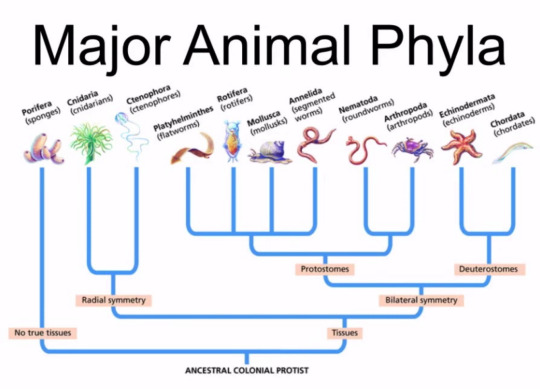
Source: major animal phyla (video lecture!)
The kingdoms of life are: animals, plants, and fungus. Within the animal kingdom, the next step of sorting is phyla. Chordata includes vertebrates (and other animals that have a spinal cord but no bones) and it does not include jellyfish, crustaceans, octopus, and lots of other things. Interestingly, it is believed that chordata and echinoderma share a common ancestor, but they are still different phyla.
Mermaids arose from a ray finned fish, in the clade Actinopterygii. They speciated from there to become the dominant life form of the oceans. Mermaids have a process that allows groups to take on a form that is analogous to a mundane fish. If that fish evolved to eat algae, the mermaid takes on those traits while still able to eat meat. This kinship is not limited to other ray-finned fish, but encompasses many vertebrates that are commonly called "fish." This includes sharks and jawless fish like hagfish. It can include lobe-finned fish like coelacanth, but does not include tetrapods. Tetrapod creatures that resemble mermaids may be centaurs. Centaurs have a completely different origin than mermaids.
Mermaids do not have kin in other phyla. If an invertebrate resembles a human, it is through another evolutionary path than "fish that mimics humans to eat them"
Aquatic creatures and their "mermaid" (humanoid) creature counterparts
Chordata:
Fish (cartiligeous, ray finned, lobe finned): Mermaids
Seals and sea lions: Selkies (selkies are a subspecies of human)
Whales and dolphins: selkie-mermaid hybrids: mammalmers
Arthropoda (crustaceans, arachnids, insects): fairies
Mollusca: (slugs, clams, octopus): Magic mirrors
Echinoderma (sea cucumbers, starfish, urchins, sanddollars): undiscovered
Cnidaria (jellyfish and anemones) and Ctenophora: undiscovered
sponges, anything resembling worms, anything not mentioned: undiscovered
Many phylums have branches that superficially resemble humans despite being completely unrelated to us and each other. This phenomenon is known as anthropisation (not anthropization, which is humans changing landscapes). But don't go thinking humans are special. The same thing happens with horses.
wow there's a lot here. You're welcome lol
71 notes
·
View notes
Note
Are all cephalopod in the cephalopoda family? Genus? Kingdom? Idk which it is
Also thank you Mr squid for delivering my mail
This chart helps breakdown the animal classification order

Domain-> Kingdom-> Phylum-> Class-> Order-> Family-> Genus-> Species
[There are also (sub/super)families, (sub/super)classes, (sub/super)orders, ect.]
To get into specifics with cephalopods here is a chart breaking down the scientific classification of a hummingbird bobtail squid!
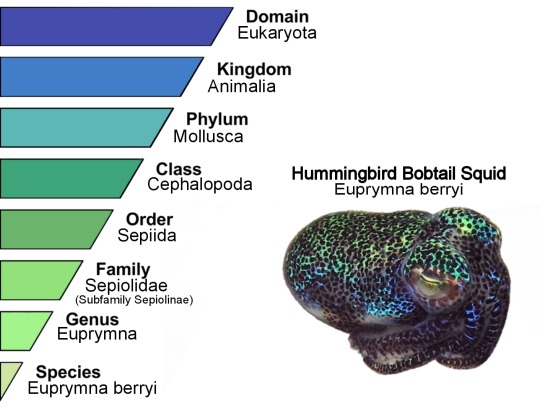
So, yes!! All cephalopods belong to the Cephalopoda class, all cephalopods also fall under the Mollusca phylum, so Cephalopods are mollusks (like snails!!)
#just getting home from vacation so ill be working on going through my ask box over the next couple days!#squid mail くコ:彡#<- he says youre welcome :3#cephalopod#taxonomy#biology#zoology#marine biology#the hummingbird bobtail squid 💙#or euprymna berryi
314 notes
·
View notes
Text
Phylum #21: Mollusca!

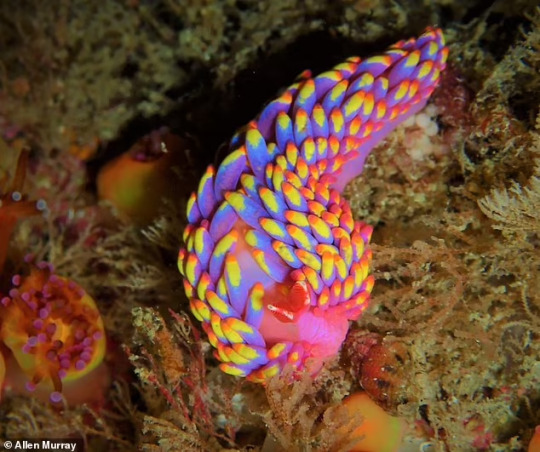
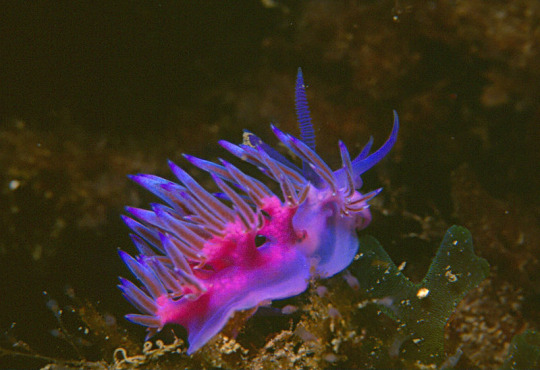
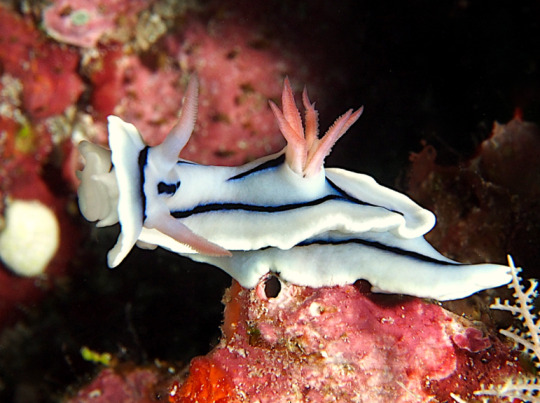
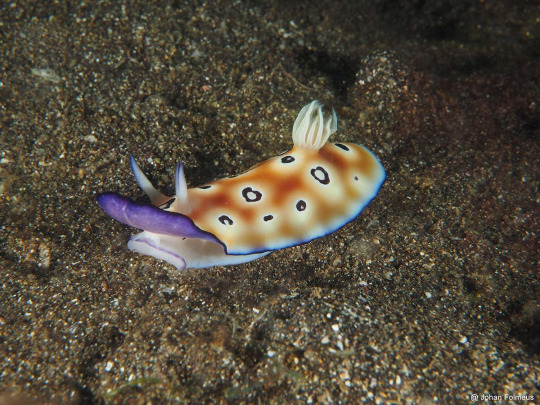
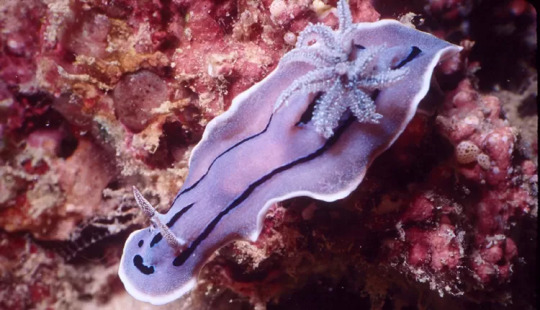
The second-largest phylum after arthropods, molluscs come in a massive variety of shapes and colors, having successfully colonized virtually every marine environment, and many freshwater and terrestrial ones. From armored chitons with hundreds of eyes embedded in their plates, to colorful nudibranchs, to fluffy-looking solenogastres, it is hard to see at first sight that they all make up a single clade.
In fact, relatively few characteristics unite all mollusks! While the hypothetical ancestral mollusk - likely a limpet-like creature - had an unsegmented shell, many mollusks derived it into an articulated or hinged shell, or lost it entirely.
All mollusks are united by a fleshy mantle covering the body, and, except bivalves, a toothed tongue or radula, used as a rasping tool to process food. The foot is also a recurring characteristic, although often highly derived - in cephalopods like squid and octopus, it has in fact evolved into their many tentacles!
Mollusks also show a pretty intriguing nervous system. Instead of a single brain, they show a series of ganglions, encircling the oesophagus and functioning in a decentralized way. In cephalopods, many of them fused into a central brain, although most, still in the tentacles, can act independently from the "brain", leading to a complex and alien intelligence in creatures known for building underwater cities!
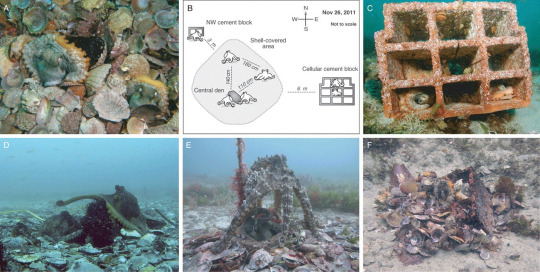
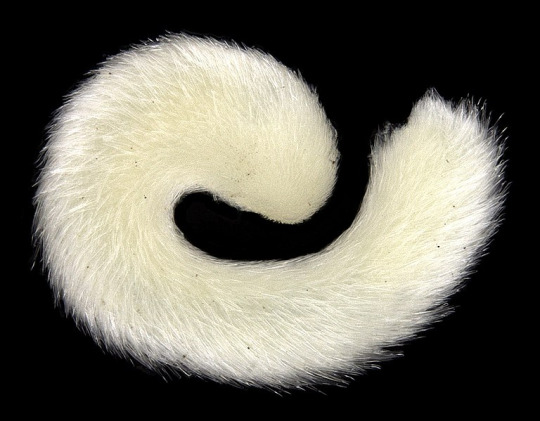

#forms and phyla#mollusca#mollusk#pride flag#marine life#marine biology#lesbian nudibranch#a lot of pride nudibranchs actually#and octopus cities
162 notes
·
View notes
Note
It’s weird that the three phylums that seem relatively complex (chordata, arthropoda, and mollusca) are so unrelated. like i know they’re all bilaterian, but past that there’s not much similarity. we’re closer related to echinodermata than cephalopods! and tunicates before them! tf!? i like though that chordates evolved from a fucked up juvenile that could reproduce. tell us more about your taxonomy finds.
i feel like the model here is basically that animalia tried a bunch of really shitty blob techniques and then figured out doing things that arent shitty blobs 3 times. and not being a shitty blob is extremely valuable evolutionarily. i mean. look at this diagram

bilateria tried to be shitty worms so many times. and then a couple times it figured out not doing that and became the wonders of the rest of the animal kingdom. cnidaria i think deserves credit tho cnidaria is often. i LOVE the medusa/polyp system
36 notes
·
View notes
Text
Snails — info page 🐌🌿
A snail is a shelled GASTROPOD – large taxonomic class of invertebrates within the phylum mollusca and gastropeda – that includes land snails, sea snails, and freshwater snails. They are typically nocturnal and are hermaphrodites, meaning they have both male and female genitals/reproductive organs.

🌿Anatomy
A typical shell is calcareous - mostly composed of calcium carbonate - and is coiled into a spiralled pattern (the number of spirals depend on the type of snail).
The body consists of: the visceral lump, mantle, head, foot, and antennae. It is attached to the shell by one (or multiple) columellar muscle.
Visceral lump -> holds excretory, digestive, reproductive, and respiratory systems
Mantle -> for respiratory function and water balance
Head -> has one or two pairs of antennae and a mouth
Foot -> for movement and digging to lay eggs
Antennae -> for orientation and detecting scents

Diet🌿
A general diet of a snail consists of fruits, such as berries, vegetables like cucumber and lettuce, and leaves, bark, grass, and stems - a good source of calcium is good too!
Snails are omnivorous and also detritivorous, meaning they can feed on decaying waste too.

🌿Garden Snails
One of, or the most, popular type of snail is the garden snail. Garden snails are a species of land snail in the family HELICIDAE. A typical lifespan is around 2-5 years with diet and habitat needs met.
Their DIET is stems, leaves, lettuce, cucumber, bark, and berries. They can also eat crushed egg shells & other sources of calcium to protect their shells, lay eggs, and help with muscle contraction.
Their HABITAT is usually an undisturbed area with moisture and good water + food supply, like forests, wetlands, old fields, and gardens.
Characteristics:
Thick shell -> 4-5 whorls (spirals) + pale brown, brown, or yellow with dark spiral bands
Mouth -> large with a thickened white lip
Body -> brown-grey colour
As Pets:
- provide correct foods + water supply (a water bowl that isn’t too deep or none at all, spraying water inside the enclosure is fine)
- use dechlorinated water to spray inside their enclosure to keep moist
- wash hands before + after handling to prevent dehydration and possible disease spreading (handling isn’t always recommended/encouraged)
- clean soil/substrate (that has no pesticides) every 1-2 weeks

Giant African Land Snails🌿
Another well-known type of snail is the Giant African Land Snail. Giant African Land Snails are a species of land snail in the family ACHATINIDAE. This species has been/is considered an invasive species. A typical lifespan is 3-6 years, but can go up to 10~, with diet and habitat needs met.
Their DIET is grass, cress, cucumber, lettuce, and cabbage. They can also eat crushed egg shells & other sources of calcium to protect their shells, lay eggs, and help with muscle contraction.
Their HABITAT is usually agricultural areas, forests, and/or wetlands. They are native to eastern Africa.
Characteristics:
Shell -> large; the size of an average adult fist (full size), it can reach to approx. 20cm in length + 10cm in diameter, brownish + dark vertical stripes
As Pets:
- provide correct foods + water supply (a water bowl that isn’t too deep or none at all, spraying water in the enclosure is fine)
- use dechlorinated water to spray inside their enclosure to keep moist
- wash hands before + after handling to prevent dehydration and possible disease spreading (handling isn’t always recommended/encouraged)
- clean soil/substrate (that has no pesticides) every 1-2 weeks

— Anything that can be removed, changed, or added, please let me know! —
🌿🐌🌱🐌☘️🐌🌱🐌🌿

27 notes
·
View notes
Text
common misconception is that dragons are closely related to chordates due to convergently evolving an internal skeleton. however, their spines do not develop from a notochord, and they actually share a most recent ancestor with the phylum mollusca
16 notes
·
View notes
Text
Phylum Round 3
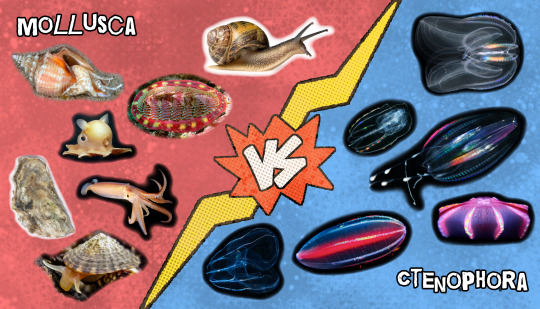
Mollusca: Snails, slugs, cephalopods, bivalves, chitons, limpets, and others. This group contains the largest invertebrates, the giant and colossal squids. They are the largest marine phylum, but many members are terrestrial. Although they are incredibly diverse in body shape, all Molluscs generally have a hard “radula” used for eating, a mantle that may secrete a hard shell, and a body mostly composed of dense muscle. These animals can be predators, herbivores, filter feeders, symbiotic, and even parasitic. This phylum exhibits remarkable diversity overall.
Ctenophora: Comb Jellies. The largest animal phylum to swim using hair-like cilia. Their cilia are arranged in rows, called combs or ctenes, down the length of their body. The cilia move in a wave-like pattern that generates colorful reflecting light shows. Almost all Ctenophores are predators of small plankton as they drift in the ocean. They inhabit a variety of marine habitats from the coastal intertidal to the open ocean.
#mollusca#ctenophora#animal bracket#tumblr bracket#bracket tournament#poll bracket#phylum round 3#phylum
83 notes
·
View notes
Text
Most popular animal tournament
Im just gonna keep going until we narrow it down to one or two animals
-and to the person who says i missed Platyhelminthes- no im not sorry i didnt include f#cking tapeworms. That cannot be your favourite animal.
#tumblr polls#poll#random poll#i love polls#poll time#my polls#polls#halloween poll#poll for funsies#daily polls#character poll#hyperspecific poll#fandom polls#fantasy poll#gender envy poll#marauders poll#poll blog#poll for everyone#poll for you#poll fun#poll tournament#poll game#polladay#polls are fun#polls polls polls#random polls#silly poll#tournament poll#tournament polls#tumblr poll
16 notes
·
View notes
Text
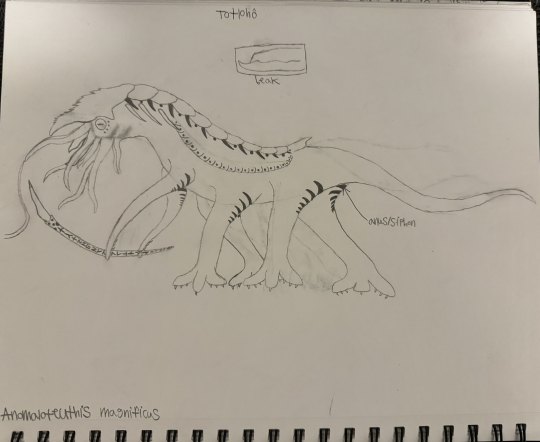
Totlohô
Kingdom: Animalia
Phylum: Mollusca
Class: Cephalopoda
Subclass: Nautiloidea
Superorder: Alysidaceratoidea
Order: Paratetrapoda
Superfamily: Cotylopodoidea
Family: Cotylopodidae
Subfamily: Anomaloteuthiinae
Genus: Anomaloteuthis
Species: A. magnificus (”magnificent unusual squid”)
Ancestral species: possibly Plectronoceras cambria
Temporal range: Early Jurassic (Toarcian) to Early Cretaceous (Hauterivian) (180 - 130 mya)
Information:
While humans have long seen themselves as the first and only sapient species to inhabit their planet, in all truth, there existed another in Xenogaea several hundreds of millions of years ago, one whose legacy can still be felt throughout the region untold eons later in their bizarre ruins and artifacts: the Totlohô-tu-Tẋusko/Tẋusko-tu-Totlohô (IPA: /to̞t͡ɬo̞hɔ tu t͡ʃusko̞/ OR /t͡ʃusko̞ tu to̞t͡ɬo̞hɔ/, meaning "ancestor of (the) architect"), better known as simply the Totlohô (/to̞t͡ɬo̞hɔ/, simply meaning "architect").
As soft tissues of this species have only rarely been preserved, and hard tissues consist only of armor plating and beaks, their size and general appearance alone must be inferred purely based on known proportions from living relatives, other members of the aberrant nautiloid clade Alysidaceratoidea, known more colloquially as the shrikehounds. The most reliable size estimate places them at around 12 feet long, 6-7 feet tall, and weighing close to 600 lbs. The appearance of these creatures, based on ancient stone murals, would seem to suggest that they were centaur-like in build, sporting six main limbs along with a menagerie of smaller tentacles around the face, which housed a long, narrow beak with a noticeable underbite. The exact coloration of this species isn’t known, though as murals exist which depict them, it can be inferred that they might have had a similar coloration pattern to living nautili, with a creamy-colored body and eyes with an earthy red shell and head piece.
Living shrikehound species are not particularly vocal, with only the paratetrapods having an analogue to proper vocal cords. This species was presumably vocal in some capacity, though the exact vocalizations cannot be deduced. It has been suggested that like their living relatives, they might have been able to produce clicks, grunts, warbles, rumbles, belches, screeches, and shrieks. It has been suggested, however, that they may have convergently evolved chromatophores like some of their living relatives and may have had a primarily visual language instead, one which has not, as of yet, been decoded.
Much of these organism's general biology is not known conclusively. Most evidence points to a carnivorous diet, consisting mainly of small dinosaurs/paravians, but also other terrestrial nautiloids, small mammals, and a bizarre group of terrestrial acanthodians known as coelospondyls. Though the exact place where they first evolved has yet to be conclusively found, fossilized beaks first appear in the Matansitra Formation in the southwest of the Isle of Perils, though later formations across the entire archipelago show that almost every habitable landmass sported a population of these creatures at one point. Dubious material from areas outside the archipelago, including what is now China and Australia, suggests they may have eventually left the archipelago at some point as well. At their peak during the Kimmeridgian age of the Late Jurassic epoch roughly 150 millions years ago, their population size was likely upwards of 40 million. Very little (if anything) can be inferred about their reproductive biology, though murals would seem to suggest that courtship and copulation was a very long, drawn-out process, treated almost as an art form unto itself. From their closest relatives, it can be inferred that the males, using a modified tentacle, deposited sperm into a small groove on the female’s underside, where it could be absorbed and used to fertilize the eggs. Their clutch size is believed to have been anomalously small compared to other species in their clade, possibly no more than 10 eggs at a time. The young appear to have matured at a similar rate to human young, if not slightly faster. Sexual dimorphism does not appear to be a prominent trait within their species.
Not much can be inferred about the behavior of this species from what remnants have been found, though it can be inferred that they were likely highly social creatures with complex social structures. They appear to have engaged in agrarianism and the farming of other animals in their later stages of societal development, as evidenced by a high correlation in dump beak remains found near dump sites for animal bones and shell, and even built cities. Murals would seem to suggest Totlohô society was ruled by a class of elders, the oldest respective members of their society, while the youngest members formed the work force. Song and dance appear to have been ways to bond with one another, and spirituality played a large part in their society’s function. Warfare appears to have been an isolated phenomenon in their society and frequently on a much smaller scale than as seen in humanity, though there exists some evidence of widespread warfare in the later years of existence. Even in their later stages, when they evidently had significantly advanced technology (or, as the more conspiracy-minded would suggest, magic of some kind), the Totlohô still preferred to build their homes out of stone.
During the later stages of their existence, the Totlohô appear to have dabbled in what appears to be highly-advanced technology or potentially even magic of some kind, as evidenced by massive, seemingly Totlhômade, carved, levitating stones covered in glyphs. In a place known as the Square Chasm (picture below, artwork by Dipfruit), a reportedly supernatural space some weary jungle travelers have stumbled upon near a triple-forked river, one of these stones appears to have formed a perfectly square-shaped pocket dimension around itself, where gravity itself appears to bend to the stone’s whim.

Fossilized beaks and hard shells are really the only physical parts of these creatures to have been preserved, and they are the only indication of their existence outside of aforementioned ruins and murals. Their written languages have yet to be decoded, and there are believed to have been several thousand at a given time. What exactly led to their extinction has yet to be conclusively revealed, though murals seem to suggest that, from their perspective, supernatural forces may have been at play, with recurrent imagery of what appears to be demonic figures showing up across several murals. Another recurrent image in these murals is a white bird-like creature with horns, which some have suggested may be related to the mythical white bird seen in Xenogaean mythology, which was said to herald the apocalypse. While some have suggested that these murals may have been painted by one of the last Totlohô, who had simply gone insane from isolation and began painting their hallucinations, others suggest that there might be a grain of truth in these murals, perhaps a war of apocalyptic scale which engulfed the entire species, the demagogues fueling it being portrayed as demonic figures. What this doesn’t explain, however, are the high number of artifacts which appear to be made from an unknown metallic substance, one which is highly durable and in near-pristine condition hundreds of millions of years later. This substance, referred to colloquially as “anomalous tungsten”, is paradoxically lightweight yet durable with a high melting point, seemingly higher than almost any other known metal or metalloid. As this metal has not been found anywhere on Earth or even in any known compounds on Earth or another planet, this begs the question of how and where the Totlohô obtained this substance, leading to a wide menagerie of conspiracy theories, with everything from extraterrestrials to divine beings being suggested as the source from which they obtained this material. Whatever the case, those who have studied the artifacts have claimed to have had vivid dreams where they spoke to the Totlohô shortly after contact. Perhaps this is just a form of confabulation or merely even group hysteria, but nonetheless, it would appear that even long after the Totlohô have left this world, their legacy still manages to touch the human spirit.
Finally, they appear to have domesticated a species of coelospondyl, Platycephale aridus, the so-called “flat-faced coelospondyl” (1st picture below, artwork by me), and another species of shrikehound, which is currently unnamed (2nd picture below, artwork by me). These appear to have been utilized as livestock animals.


#novella#speculative evolution#fantasy#scifi#scififantasy#speculative biology#speculative fiction#speculative zoology#worldbuilding#creature art#sophont#sci fi creature#creature design#fantasy creature#creative writing#creature#scifi worldbuilding#fantasy worldbuilding#nautiloid#nautilus#cephalopod#mollusk#cephalopods
18 notes
·
View notes